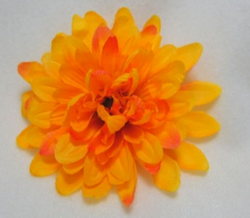Shinto
This page lists of the various symbols in the Shinto group.
Shinto (神道 Shintō?) or Shintoism, also kami-no-michi, is the indigenous spirituality of Japan and the people of Japan. It is a set of practices, to be carried out diligently, to establish a connection between present day Japan and its ancient past. Shinto practices were first recorded and codified in the written historical records of the Kojiki and Nihon Shoki in the 8th century. Still, these earliest Japanese writings do not refer to a unified "Shinto religion", but rather to disorganized folklore, history, and mythology. Shinto today is a term that applies to public shrines suited to various purposes such as war memorials, harvest festivals, romance, and historical monuments, as well as various sectarian organizations. Practitioners express their diverse beliefs through a standard language and practice, adopting a similar style in dress and ritual, dating from around the time of the Nara and Heian Periods.
Symbols in this group:
Chrysanthemum
In parts of eastern Asia, the chrysanthemum is extremely important as a cultural symbol. Although the lotus flower has symbolic meaning across a larger swath of the continent, in China and Japan it runs into some stiff competition from this golden-hued beauty.
Fox
The fox carries important meaning in a number of cultures, and the nature of its symbolism varies quite widely, both between cultures and sometimes within them. While some of these meanings are quite well known, the fox also possesses a number of less obvious associations.
Rice (grain)
Throughout East and South Asia, rice cultivation stretches back many thousands of years, and it remains an immensely important foodstuff in both regions today. Over its very long history, this simple grain has acquired a vast number of symbolic meanings. While these connotations vary in specifics from region to region, they also display certain common themes.
Tomoe
A tomoe (巴?), also 鞆絵, and tomowe (ともゑ?) in its archaic form, is a Japanese abstract shape described as a swirl that resembles a comma or the usual form of a magatama.
Citation
Use the citation below to add this symbols group page to your bibliography:
Style:MLAChicagoAPA
"Shinto Symbols." Symbols.com. STANDS4 LLC, 2025. Web. 22 Feb. 2025. <https://www.symbols.com/group/73/Shinto>.










Have a discussion about the Shinto group with the community:
Report Comment
We're doing our best to make sure our content is useful, accurate and safe.
If by any chance you spot an inappropriate comment while navigating through our website please use this form to let us know, and we'll take care of it shortly.
Attachment
You need to be logged in to favorite.
Log In